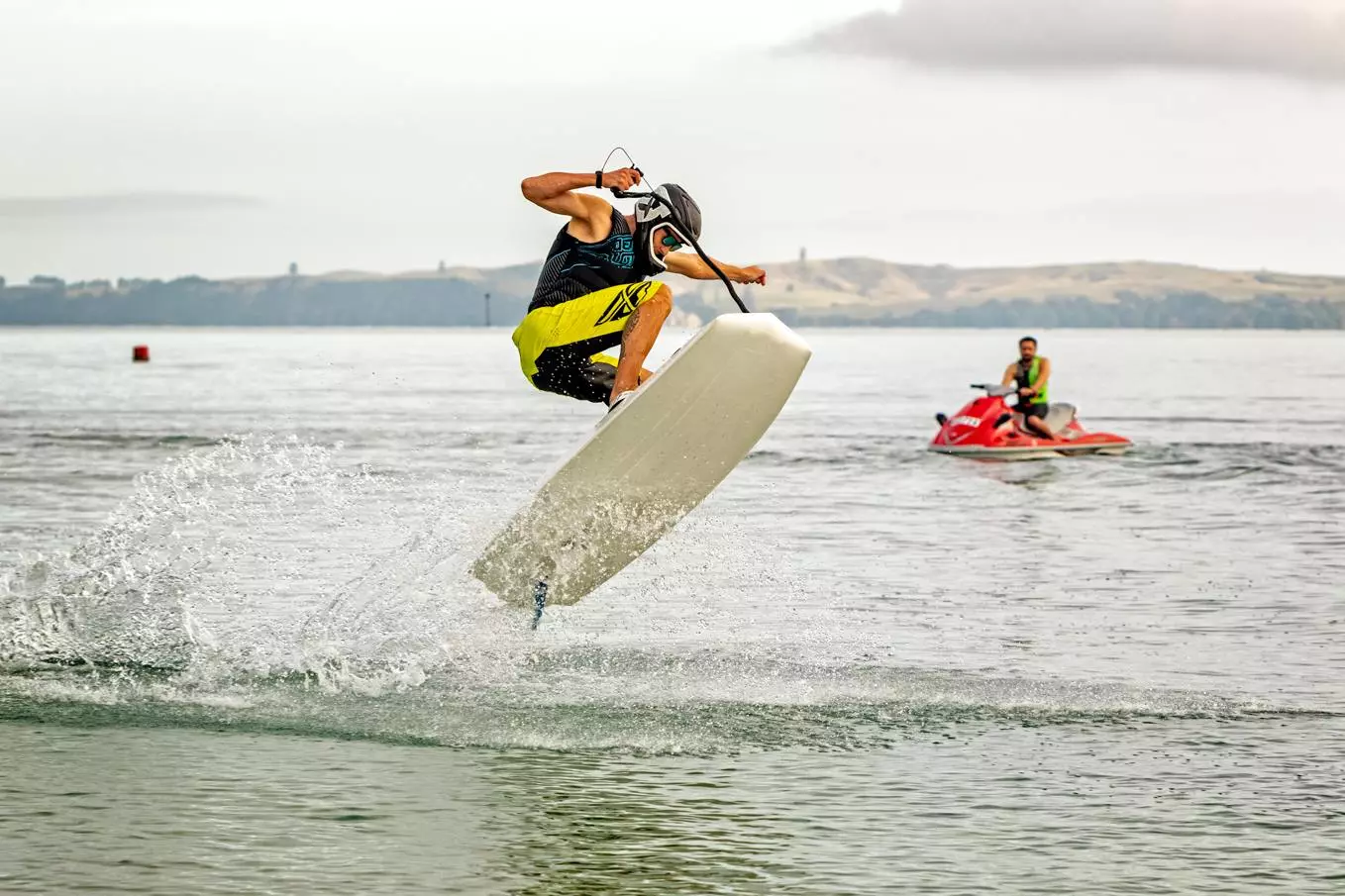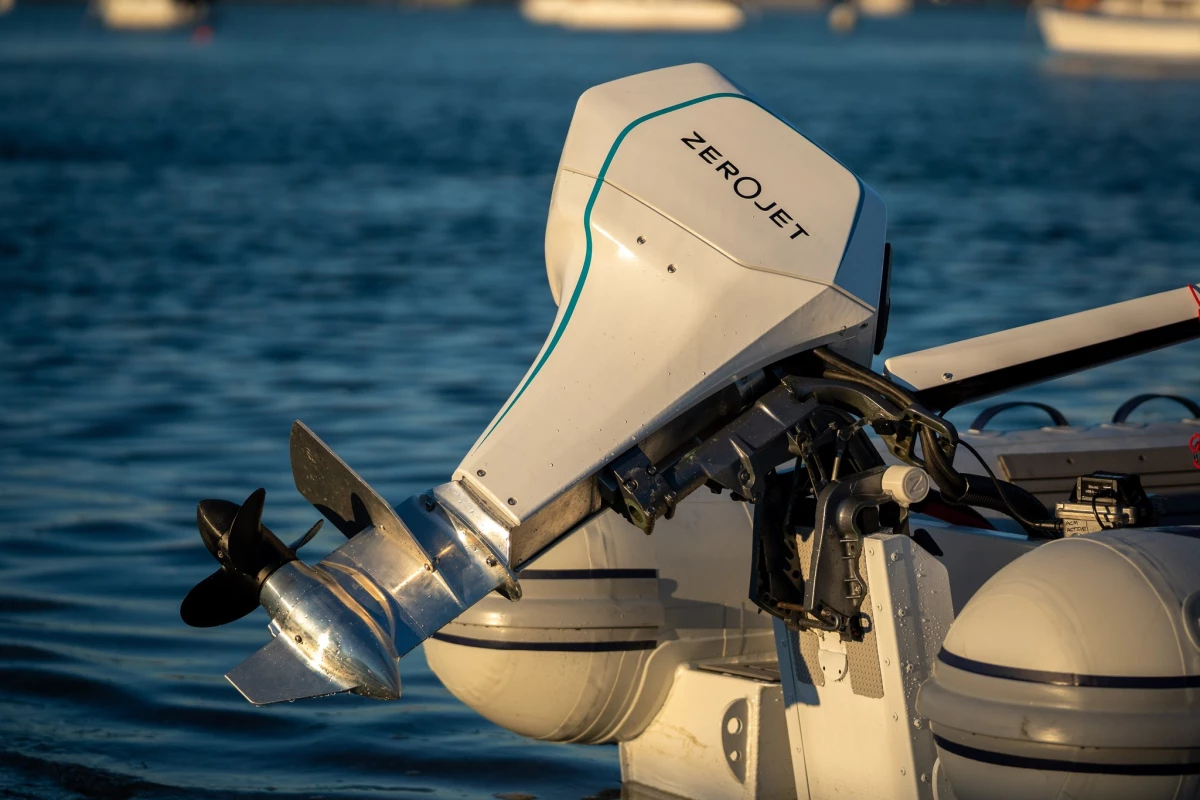Born from the high-powered world of electric jetboarding, ZeroJet is now channeling all its energy into building performance electric boat drives. Its very first outboard combines drop-and-drive convenience with a superior power-to-weight ratio ready to give small boats a quiet but potent boost.
Based in New Zealand, ZeroJet got its start in the jet surfboard industry. Founders and entrepreneurs Bex Rempel and Neil Mans founded Voltaic Jetboards in 2015 after a small crisis of conscience about the pollution associated with the gas-powered jetboards they were renting at their Jetsurf Experience Center in Perth, Australia.
Voltaic worked for several years to develop a prototype electric board that was ultimately competitive with some of the fastest electric surfboards in the world, exceeding speeds of 43 mph (70 km/h), according to ZeroJet. Pushing that kind of performance out of a compact, surfboard-fit electric drive sparked the idea of reworking the technology for boats in response to growing demand for electric boat drives. Voltaic made the pivot in 2019 and rebranded as ZeroJet a year later.

Since then, ZeroJet has focused on developing inboard electric jet drives for small boats. It's worked with a number of boatbuilders toward creating small, quiet zero-emissions tenders. The all-new Outboard gives the company a presence in a broader market, providing a solution for both boatbuilders and boat owners looking to make the switch to purely electric power.
ZeroJet claims its newest launch is the "highest power-to-weight electric outboard in existence," but that's not quite the case. A natural starting point for comparison was the most powerful electric outboard we've looked at, the Evoy Storm 300, which more than doubles ZeroJet's 474-W/kg (18-kW/38 kg) power-to-weight ratio with a 1,023-W/kg (225-kW/220 kg) figure.
To be fair, Evoy's motor is an 800-V unit, and a little farther down its Outboard web page ZeroJet does mention 48 volts as a sort of qualifier, so we compared its 474-W/kg ratio against a few other low-voltage units we've looked at previously. It did come out on top, handily beating out the 188-W/kg Tohatsu MEP6.0A, 213-W/kg Propel S1 and small, grab-and-go 76-W/kg E-Propulsion eLite.
Expanding out beyond our own coverage to other 48-V outboards, we found the ZeroJet also bests the 417-W/kg Molabo Aries R50, 306-W/kg Mitek 22, 298-W/kg Aquawatt Green Power 15.5, and 200-W/kg Torqeedo Cruise 12.0 Torqlink.

We double-checked against manufacturer specs, but PlugBoats' list of electric outboards provides a good quick reference for further comparison, offering the power and weights of many different e-outboards.
That said, we won't bore you with power-to-weights for every 48-V outboard on the planet. Suffice to say, ZeroJet's motor does offer a very solid power-weight density thanks largely to a low 38-kg (84-lb) weight that undercuts even some of the less powerful e-outboards mentioned above. Certainly ZeroJet's background in lightweight, high-powered e-drive design for surfboards has proven a handy jumping off point.

The ZJ outboard pairs with a 5- or 10-kWh battery pack, and ZeroJet estimates a top speed of 23 mph (37 km/h) and a range of 14 nautical miles (26 km) at an 18-mph (29-km/h) cruising speed. Actual performance will ultimately depend on a multitude of factors, starting with the boat hull to which the outboard is mounted.
Good news no matter the specific vessel's final range figure: With a fast-charging time as low as one hour, boaters can be back on the water in less time than it takes for a leisurely Mediterranean lunch.
ZeroJet launched worldwide preorders last month, offering a special early bird price of US$11,990 for the first 300 reservations of the outboard with 5-kWh battery. That's a 37% discount off the planned $18,990 retail. Buyers will be able to select from several options to better tailor the motor to their boat, including tiller steer and center console control systems, short and long shaft configurations, and various propellers. Deliveries are scheduled to begin in 2025.
Source: ZeroJet







